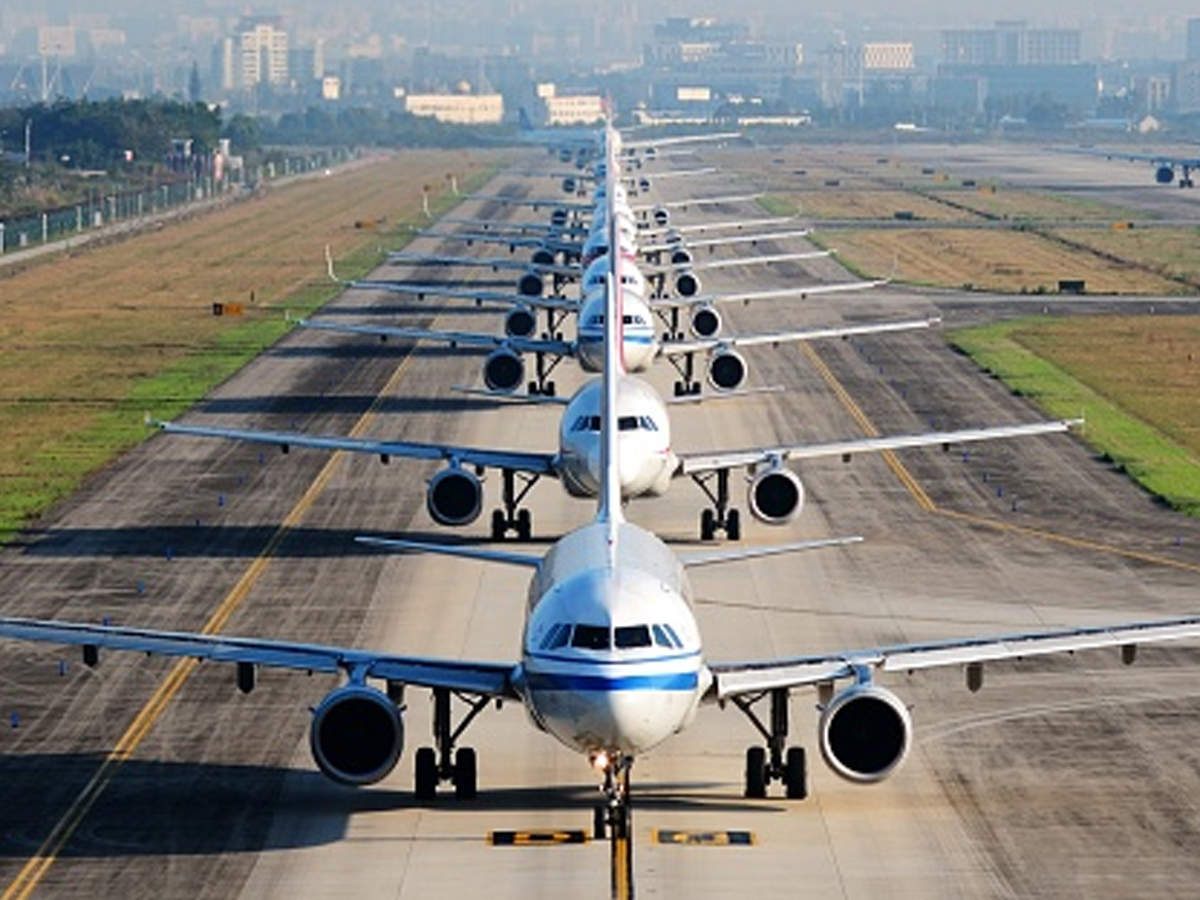Non-metro cities have seen a rapid increase in the number of flights post the lockdown. In hindsight, they have fared quite better than the metro cities. Among airlines, Indigo has led the growth as it flew to 59 destinations in 2020-21 when compared to 61 destinations in 2019-20.
The coronavirus pandemic-induced lockdown was almost a death knell for the aviation sector in India. It was only after the government decided to lessen the restrictions that the sector has taken a sigh of relief and since then the sector has been on the path of gradual recovery.
There has been a good recovery as far as occupancy and operation of flights are concerned across the country. According to the data released by the Directorate General of Civil Aviation (DGCA), only 58 percent of the passengers who flew in December 2019 flew in December 2020. Further, the data also suggested that in overall flight departure Delhi has led the way followed by Bengaluru. Other than this, North India has maintained a constant lead in all the timing slots in flights’ departure and arrival.
Among the airlines, Indigo emerged as the market leader again in 2020. In 2020-21, Delhi saw 61 percent of flights that flew in 2019-20 per week while Bangalore was at 58 percent followed by Hyderabad and Mumbai at 56 and 49 percent respectively. Kolkata and Chennai in 2020-21, have languished with just 49 and 42 percent of flights that flew in 2019-20.
In the same way, northern India witnessed 62 percent of flights of 2019-20 in the last year followed by eastern India at 58 percent. In this regard, western and central India has lagged behind considerably with just 47 and 43 percent of flights of 2019-20 flying in and out last year. As far as timing preference is concerned afternoon slot (noon to 6 pm) was most sought after by the passengers followed by the morning slot (6 am to noon). On the contrary, night and evening slots saw a major cutback in passengers’ preference.
Small cities heading the recovery growth
Besides this, the major limelight has been stolen by non-metro cities that saw a rapid increase in the number of flights post the lockdown was lifted. Small airports like Gorakhpur, Prayagraj, Kandla, and Leh witnessed an increase in the number of flights. Overall, each of these airports handled more than 25 flights on a weekly basis.
Also, in 2020, non-metro cities have performed far better in the recovery of the aviation business than metropolitan cities. In 2020-21 flights from the metro to metro were 46 percent from 23 percent in 2019-20 whereas flights from the metro to non-metro spiralled up to 60 percent in 2020-21 from 32 percent in 2019-20. Prominent non-metro cities that recorded the highest recovery were Bubhaneshwar at 77 percent and Patna at 73 percent.
Scenario among airlines
Among airlines, Indigo has led the growth as it flew to 59 destinations in 2020-21 than 61 destinations in 2019-20. As compared to Indigo, Spicejet saw a significant decline in its destination from 53 in 2019-20 to 40 in 2020-21. As per DGCA data, Indigo has 48 percent of passenger share in February 2020 which got increased to 54 percent in December 2020. But, in the case of Spicejet, the airline saw a decline at 13 percent in December 2020 from 17 percent of passenger share in February 2020.
In government-owned airlines, Alliance Air saw better recovery with 71 percent of operational flights among non-metros as compared to 44 percent of flights of Air India. Spicejet witnessed the highest seat occupancy of 78 percent than Indigo with 72 percent.
India’s aviation sector
The Indian aviation sector is one of the largest aviation networks in the world. By 2024, it is poised to become the third-largest after overtaking the United Kingdom. In January 2021 alone, 8.7 million passengers flew which was 19 percent higher than December 2020 at 7.3 million. Furthermore, in FY20, domestic passenger traffic stood at a total of 274.5 million while that of international passengers clocked at 66.54 million.
It is also estimated that by 2027 Indian aviation sector will be requiring 1,100 airplanes to meet the demand while by 2038 a total of 2,380 more airplanes would be required.
Fare hike of domestic flights
Recently, the Ministry of Civil Aviation announced a fare hike in domestic flights. While the government extended its control of capping airfares till March 31, it has increased lower and upper fare caps by 10-30 percent. This is said to give a financial boost to the industry battered by the pandemic.
The flights which are of less than 40 minutes duration will now be having their lower fare at Rs. 2,200 from Rs. 2,000 while the upper fare will be at Rs. 7,800 from Rs. 6,000. With this decision, the government has also allowed the airlines to now operate at 80 percent of their passenger capacity.

